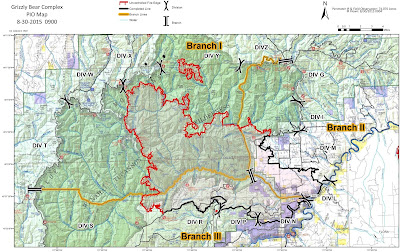The wildfires of last summer have left mushroom pickers with an abundance of land on which to hunt for morels. If you are thinking of looking for morels at the burn sites this Spring, but aren't sure where to start, the information here is designed to help you get going.
***Please note that the rules for gathering morels will vary from state-to-state and from forest-to-forest. You will need to consult your local forest ranger district for details. This is definitely in your best interest. Often times the forest rangers will have maps on hand with directions to exact places with mushroom activity. They are there to help, take advantage.***
The first thing you will want to do is identify a potential burn site. Here is the website for all active and non-active wildfires.
Use the filters to narrow your search to the state you desire. Also be sure to select "non-active" as the status and select an appropriate number of days for the max range. Once your filters are set, a list of all wildfires will be displayed. Click on any of the incidents for more information, including fire perimeter road maps. Make sure that this is a timber fire, not brush or grass. Do this by checking the 'fuels involved' portion of the incident page. For best results, the bigger the fire the better. 5,000 acres is generally a good minimum.
 |
| Click on the 'maps' tab of the incident to find fire perimeter maps, road closure maps, and much more. Here is a fire permiter map from the Grizzly Bear Complex in the Umatilla National Forest. |
Morels fruit in the Spring only. The exact time will depend on your location, elevation, and definitely the weather conditions. Here in eastern Washington, the harvest period is generally from April through May in the lowlands, and through June or longer in the mountains and higher elevations. Please note, these are hasty generalizations. Last year's earliest local morels came in the final days of March. Here is a fun website you can reference to find where people are currently finding wild mushrooms, especially morels in the Spring.
 |
| Here is a picture of what potential burn morel habitat looks like. Note the complete lack of greenery. When morels are fruiting, there will be small spots and patches of greens like miner's lettuce, sheep sorrel (both edible), and others. |
 |
| Morels at burn sites can be fairly easy to spot, like this multi-headed specimen. Clusters like this are very common at productive burn sites. |
 |
| Burn morels, morchella conica, are typically smaller than other varieties. This picture shows a couple of larger burn morel specimens. |
 |
| And some small specimens. |
 |
| With a little bit of luck and and a little bit of hiking, hopefully you will be able to fill your mushroom bag very quickly. Good luck! |







No comments:
Post a Comment
Please leave your questions and comments below. They will be added to the page as soon as I can moderate them. Thanks for contributing!